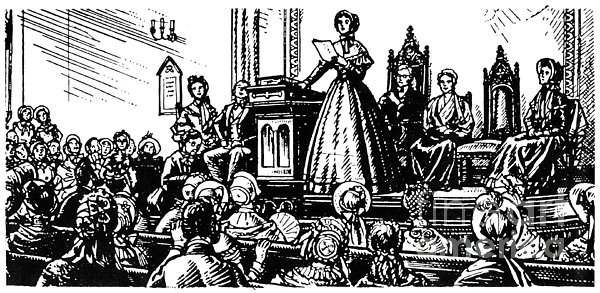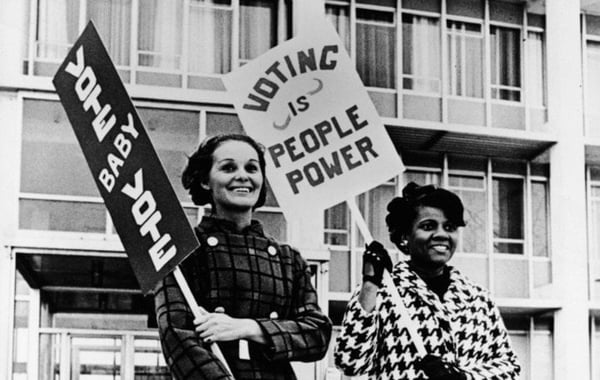73.7 million women in America reported that they voted in the 2016 presidential election -- and good thing, too, since that election marked the historical occasion of a female candidate in Hillary Clinton. However, as recently as only a hundred years prior, women were barred from voting in national elections!
The 19th Amendment, which was ratified in 1920, allowed women to vote nationwide. However, the fight for the female vote had been ongoing for nearly a century. In 1848, the Seneca Falls Convention -- a women’s right convention organized by Elizabeth Cady Stanton and Lucretia Mott, who met at an anti-slavery convention where they were disallowed to participate due to their gender -- propelled women’s rights to the forefront of many minds.

Following the Seneca Falls Convention, the call for the vote became central to the overall women’s rights movement, and public awareness continued to be raised over the 19th and early 20th century, ultimately culminating in the right to vote.
The female vote has been hard-won and largely celebrated. Now, women can not only vote with equal weight to their male counterparts, but there are many, many female politicians! In the United States, we currently have 7 women holding cabinet-level federal positions, and 3 female Supreme Court judges. 19.8% of Congress is female, along with 23.7% of the elected state officials -- though women have been running for office prior to being allowed to vote, with the first female mayor in the country being elected in Kansas in 1887.

Now, it remains crucial that we ensure that our youngest voters are informed, not only of the candidates in question, but also of the history of their rights, and how they were won. Depending on the grade level, our youngest students might not even be aware that not everyone was always allowed to vote! There are lots of age-appropriate books to read and discuss with younger students (see below for suggested reading.)
Older students could be taught using a creative writing activity -- for example, ask your students to write a persuasive essay from the perspective of a suffragette in the early 20th century -- or from an opponent to the female vote, for a challenge! Consider a Mobile Ed show to help your students celebrate Women’s History Month -- our Women in History show covers a wide array of strong female role models throughout history, and explores the importance of women’s suffrage as well as the innovations that followed for women in the wake of such an important milestone for female history.
Suggested reading:
Elizabeth Started All the Trouble by Doreen Rappaport
I Could Do That!: Esther Morris Gets Women the Vote by Linda Arms White
Around America to Win the Vote: Two Suffragists, a Kitten, and 10,000 Miles by Mara Rockliff
If You Lived When Women Won Their Rights by Anne Kamma




